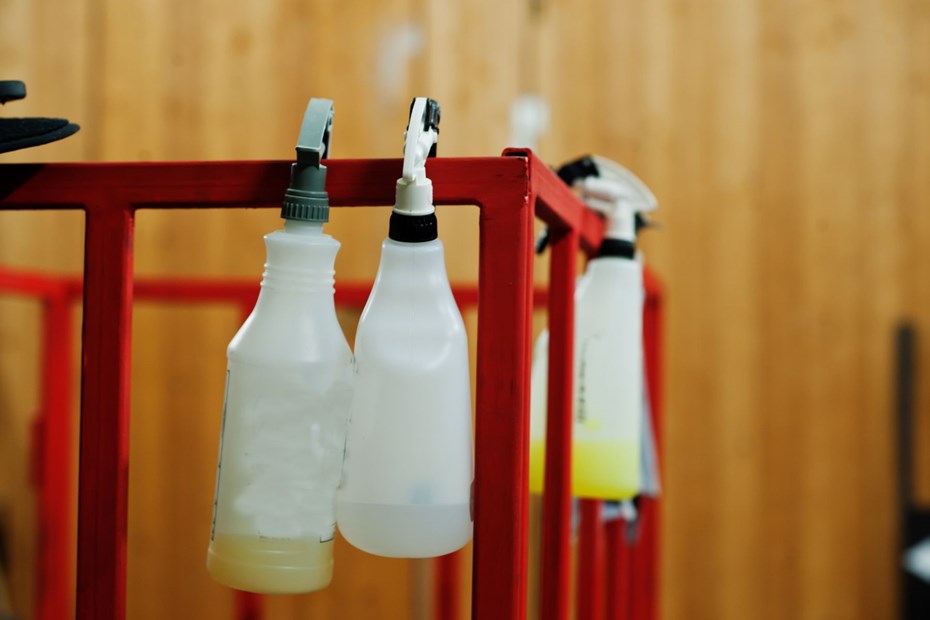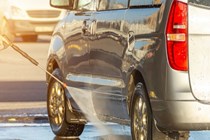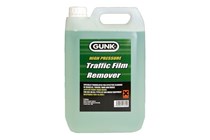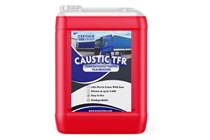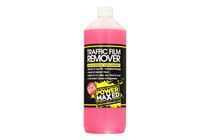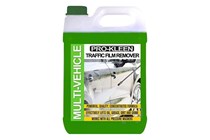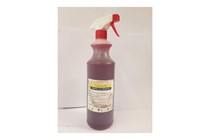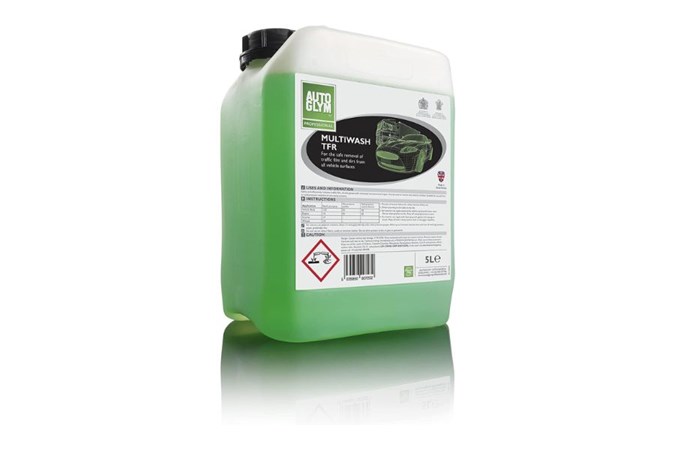There are many car cleaning products that you can use to ensure your car is as sparkling as it can be, but sometimes you’ll need to enlist the help of something stronger – like a traffic film remover (TFR). While snow foam looks cool it’s also quite gentle on your paintwork, delicate trim, and rubber seals. If the stubborn grime and contamination isn’t shifted with snow foam, then you’ll want to consider TFR.
You’ll often see TFR sold in giant 25-litre bottles and often advertised as the perfect cleaners for lorries and other suitably industrial vehicles. Put simply, TFR is designed to clear grime aggressively without a whole lot of care for protecting the paintwork. As such, we recommend it for vans and other commercial vehicles, but we say stick to snow foam for your car.
Another warning for TFR, too. While the extra cleaning power is welcome, the majority of TFRs are alkaline and can pose a threat to rubber seals, strip the colour from plastics and dull clearcoats over time. As such, make sure you follow dilution ratios strictly.
The best traffic film removers (TFR) at a glance:
Best traffic film remover (Editor’s choice): CarPlan Trade Valet Super TFR – Buy now from Amazon UK
Best gentle traffic film remover: Pro-Kleen Traffic Film Remover – Buy now from Amazon UK
Best traffic film remover for heavy-duty cleaning: Jennychem Industrial Chemicals TFR – Buy now from Amazon UK
Things to consider when looking for TFR:
Chemical composition: It is important to consider the pH level of the TFR product that you’re using as most TFRs will have a high pH level. This means that they are highly alkaline which helps to break down the acidic traffic film. It is also important to take measures to protect your hands and eyes when using high-pH TFRs by wearing gloves and safety goggles.
Some TFRs also come with a neutral pH balance which means they are safer to use and kinder on your vehicle. Be aware that pH neutral TFRs are less effective on tough grime and contamination than alkaline cleaners.
Dilution ratio: As a rule of thumb, we would recommend that you never use a TFR that doesn’t have a dilution ratio, this is because the ratio will instruct you on how much of the product is recommended to be used safely. It is possible to adjust the ratio slightly in order to tackle tougher traffic film, or to dilute the TFR more to tackle lighter dirt, but always follow instructions as incorrectly diluted TFR can damage your vehicle’s paintwork and trim.
Caustic vs non-caustic: Caustic TFRs are generally used to remove heavy dirt and grime, particularly in industrial applications. Caustic TFRs are strong, and they will strip your vehicle of any sealants, but if used correctly they shouldn’t damage the paint.
Non-caustic TFRs are also pretty strong as they are generally high in pH level, but they’re designed to be safer to use on paintwork that has a sealant applied. They don’t have the same cleaning power as caustic cleaners, but they do have their uses. If your vehicle has a lot of exposed aluminium, then a non-caustic TFR might be more suitable for you.
Application method: There are a number of ways that TFR can be applied; these include a spraying with a pressure washer, a snow foamer, or even simply applying it using a sponge, but it is important to spread the cleaner evenly. You must allow the TFR to dwell on the surface of your car but do not let it dry on your car. Always rinse the cleaner off your car to remove any TFR residue.
The best traffic film removers:
Best traffic film remover (Editor's choice)
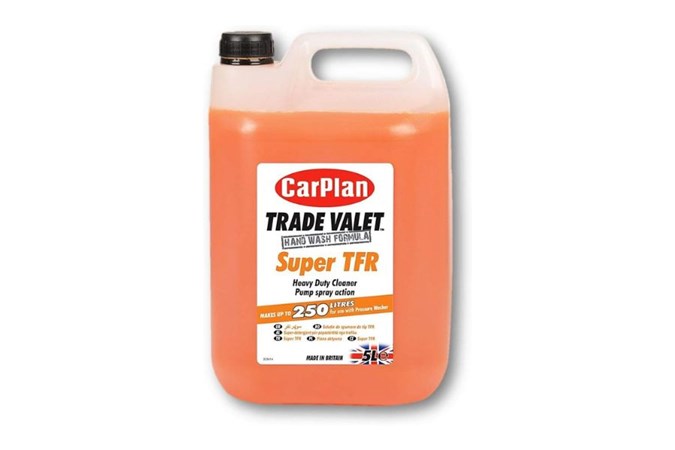

Pros
- pH neutral so it’s relatively safe for cars
- 1:50 ratio means it can last a while
- Can apply using an application sprayer or a jet washer
Cons
- May produce an allergic reaction
- Might struggle with especially stubborn dirt
| Bottle size | 5 litres |
| Dilution ratio | 1:50 |
| pH level | Neutral |
Best gentle traffic film remover
Pros
- Kinder to rubber and plastic
- 1:100 dilution ration means this product offers great value
- Is effective using hot or cold pressure washer, or a pump sprayer
Cons
- Not so good on tough grime
- Strips wax and polish from your car
| Bottle size | 5 litres |
| Dilution ratio | 1:100 |
| pH level | Neutral |
Best traffic film remover for smaller cleaning
Pros
- Pre-mixed so easy to use
- Safe on rubber and plastic
- Has a nice smell
Cons
- Not enough for larger jobs
- Not the best value for money due to smaller size
| Bottle size | 1 litre |
| Dilution ratio | 1:9 (pre-diluted) |
| pH level | N/A |
Best traffic film remover for heavy-duty cleaning
Pros
- Very powerful heavy-duty cleaner
- Good hydrophobic qualities
- Should last a very long time thanks to the 1:600 dilution ratio
Cons
- Not so kind to paintwork
- Caustic formula so should exercise caution with gloves and eye protection
| Bottle size | 20 litre |
| Dilution ratio | 1:600 |
| pH level | 12-14 |
Best for versatility
Pros
- Trusted brand for quality
- Useful for a range of applications
- Comes with decent instructions for each application
Cons
- Must take safety precautions when using
- Very strong product can be damaging to your car if use incorrectly
| Bottle size | 5 litres |
| Dilution ratio | Various |
| pH level | ~13 |
Best for commercial vehicles
Pros
- Heavy-duty solution should tackle even the toughest dirt
- Very good value for money
- Trusted brand for quality
Cons
- Not suitable for cars
- Must take safety precautions when using
| Bottle size | 5 litres |
| Dilution ratio | 1:100 |
| pH level | 12-14 |
What is traffic film?
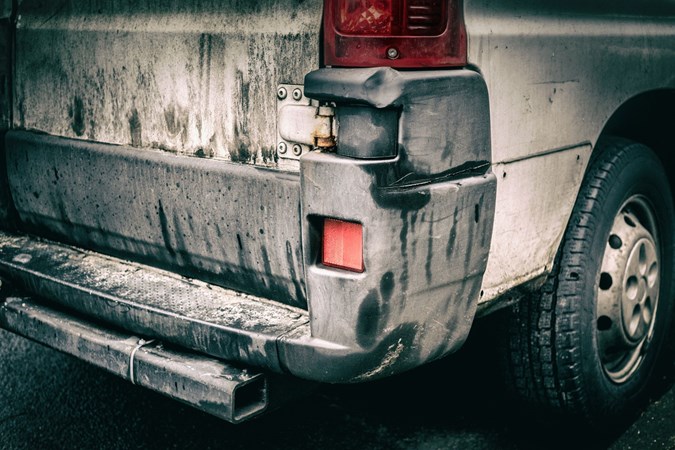
Traffic film is that horrible layer of grime that builds up on your car as you drive around that ordinary car shampoo can’t shift. It’s most noticeable on lighter cars and is made up of various oils, mud, grease, grit and any other containment you can think of. They’re most prevalent on commercial vehicles because of the industrial areas they’re often used in and the fact that most aren’t cleaned regularly. If you’ve ever seen a van with ‘clean me’ scrawled on the back, it’s probably been written in the traffic film.
It’s also quite difficult to remove, pre-washes like snow foam simply aren’t strong enough to dislodge heavy, baked-in contamination, which means you’ll need to make use of stronger cleaners to properly remove it.
A good traffic film remover will easily break down this grime and remove it, often without too much effort on your part. TFR is designed to remove tougher substances that car shampoo would struggle to shift. Once you’ve cleared the traffic film barrier, you can then get down to the finer points of detailing your car and get rid of other bothersome stains, like bird poo and similar natural residues.
Sign up to the Parkers Newsletter to keep up to date with more of the latest reviews, news, and recommendations from the Parkers team.
Just so you know, whilst we may receive a commission or other compensation from the links on this page, we never allow this to influence product selections – read why you should trust us.
Just so you know, we may receive a commission or other compensation from the links on this website - read why you should trust us.


